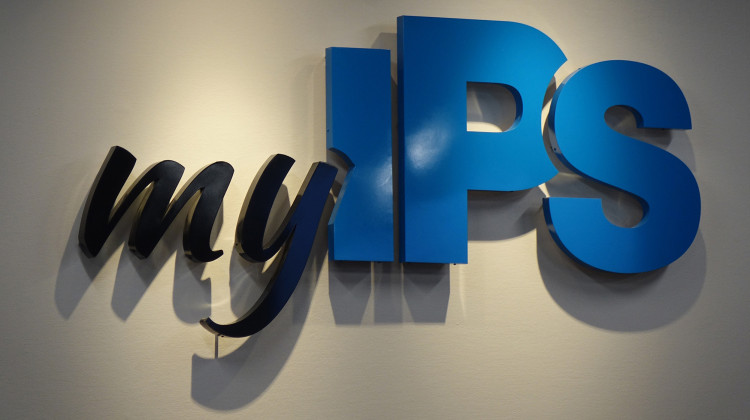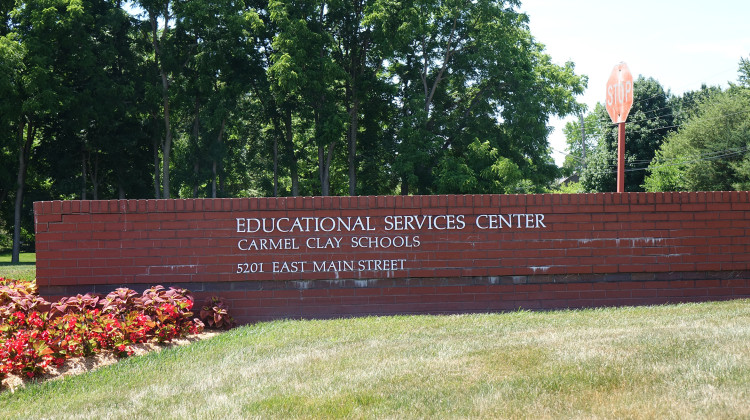Some of Indiana’s top institutions received an F rating on a national report on the effectiveness of the reading curriculum in teacher prep programs, including Indiana University’s flagship Bloomington campus and Ball State University. The announcement comes just after Indiana lawmakers mandated a new reading curriculum for public and charter elementary schools and changes to teacher prep programs.
The only Indiana school that received the top score, an A+, was Marian University in Indianapolis.
The results come as the state faces a reckoning with how children are taught literacy. In 2022, less than 33 percent of Indiana fourth graders were proficient in reading, according to the National Assessment of Educational Progress. A year later, Indiana's own test found nearly 1 in 5 third graders lacked strong vocabularies and phonics.
The new report, Teacher Prep Review: Strengthening Elementary Reading Instruction, found better curriculums for college students learning to become teachers could drastically improve reading comprehension.
MORE: Will teaching reading science pull Indiana children out of a literacy decline?
“Far too many students are denied the right to an excellent education, including the right to read, because they don't have access to effective literacy instruction,” said Denise Forte, President and CEO of The Education Trust — an advocacy group that works to dismantle racial and economic barriers in education. “Teacher preparation programs are in the enviable position of ensuring every child, especially students of color and those from low-income backgrounds, has access to a teacher who is well-prepared in the methods that we know work best.”
Across the country, at least 31 states and the District of Columbia have passed legislation related to reading science. The method is a decades-old collection of evidence-based practices that provide educators with the skills to identify sounds and letter correspondence based on how human brains process language. That includes the five components of reading – phonemic awareness, phonics, fluency, vocabulary, and comprehension.
New research from the National Council on Teacher Quality shows that 90 percent of children could learn to read if educators used reading science practices. But the report says most teacher-prep programs that prepare future elementary educators still don’t fully cover the science of reading.
“We’re in the midst of a long overdue revolution on the science of reading, but teacher prep programs haven’t fully caught up,” said Heather Peske, NCTQ President. “Prospective teachers — and certainly their students — deserve far better.”
The study found 39 undergraduate and nine graduate programs — out of 693 programs — earned the top designation from NCTQ for “exceeding the targets set by literacy experts for what constitutes adequate instruction in the science of reading and for not teaching aspiring teachers any methods that run contrary to the research.”
Eight Indiana colleges received F ratings. In response to the report, both universities described their teacher prep programs as producing excellent educators.
“IU’s programs not only meet and exceed the rigorous expectations of accrediting agencies like Council for the Accreditation of Educator Preparation and the State of Indiana, but our students regularly demonstrate high pass rates on state licensure exams,” IU spokesperson Jonathan Coffin wrote in an email. “While we applaud a focus on reading, reading comprehension and a data-driven approach to reading curriculum, we remain confident in the robust preparation our programs provide.”
Butler spokesman Mark Apple said the school provides “research-based reading instruction.”
“Our graduates are succeeding at the highest level in classroom and administrative positions in K-12 schools throughout the state and nation, and frequently earn ‘Teacher of the Year’ recognition in the school districts they serve,” he said in an email.
Anderson University and Ball State have provided additional materials for consideration after the review deadline, but prior to publication. Their scores may change pending review of materials.
Ratings in the NCTQ report are based on the number of instructional hours student teachers receive, assigned readings, assignments and assessments, and opportunities to practice with elementary students.
Researchers agreed on an average amount of time student teachers should spend on each component, and used this information to help grade the higher education institutions — 7 hours for phonemic awareness, 8 hours for phonics, 4 hours for fluency, 6 hours for vocabulary and 9 hours for comprehension.
Some institutions could have received low scores because they failed to reach this benchmark, or included practices contrary to science-based literacy research, such as three-cueing. This method allows students to use pictures and context clues to guess an unfamiliar word instead of using their reading knowledge to sound out a word.
The Indiana General Assembly unanimously approved a law this year that will require all teacher-prep programs at the state’s accredited colleges and universities to have a reading science curriculum by 2025. A law also bans the use of three-cueing in the classroom.
Last year, the Lilly Endowment Inc. provided $25 million to higher education institutions across the state to help teacher prep programs switch to reading science curriculums.
NCTQ’s ranking of Indiana undergraduate education programs:
Anderson University — A
Ball State University — F
Huntington University — D
Indiana State University — D
Indiana University - Bloomington — F
Indiana University - East — F
Indiana University - Kokomo — D
Indiana University - Northwest — B
Indiana University - South Bend — F
Indiana University - Southeast — C
Indiana University-Purdue University Indianapolis — F
Marian University Indianapolis — A+
Purdue University Fort Wayne — F
Purdue University Northwest — A
Saint Mary-of-the-Woods College — F
University of Evansville — A
University of Southern Indiana — B
Indiana Vincennes University — F
The following 11 Indiana colleges refused to participate in NCTQ’s study — either by providing heavily redacted materials or not responding to data — according to the report:
Bethel University
Butler University
Franklin College
Goshen College
Grace College and Theological Seminary
Indiana Wesleyan University
Saint Mary's College
Taylor University
University of Indianapolis
University of Saint Francis
Valparaiso University
Correction: An earlier version of this story listed Butler University as one of the eight Indiana universities that received an F rating. Butler did not participate in the study and did not get a rating.
Contact WFYI education reporter Elizabeth Gabriel at egabriel@wfyi.org. Follow on Twitter: @_elizabethgabs.
 DONATE
DONATE









 Support WFYI. We can't do it without you.
Support WFYI. We can't do it without you.